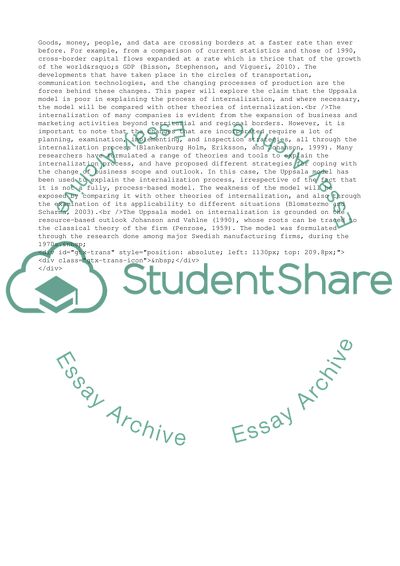Cite this document
(Globalization and Internationalization: The Uppsala Model Essay Example | Topics and Well Written Essays - 1750 words, n.d.)
Globalization and Internationalization: The Uppsala Model Essay Example | Topics and Well Written Essays - 1750 words. https://studentshare.org/business/1822871-assess-the-claim-that-the-uppsala-model-is-a-poor-guide-to-the-internationalisation-process
Globalization and Internationalization: The Uppsala Model Essay Example | Topics and Well Written Essays - 1750 words. https://studentshare.org/business/1822871-assess-the-claim-that-the-uppsala-model-is-a-poor-guide-to-the-internationalisation-process
(Globalization and Internationalization: The Uppsala Model Essay Example | Topics and Well Written Essays - 1750 Words)
Globalization and Internationalization: The Uppsala Model Essay Example | Topics and Well Written Essays - 1750 Words. https://studentshare.org/business/1822871-assess-the-claim-that-the-uppsala-model-is-a-poor-guide-to-the-internationalisation-process.
Globalization and Internationalization: The Uppsala Model Essay Example | Topics and Well Written Essays - 1750 Words. https://studentshare.org/business/1822871-assess-the-claim-that-the-uppsala-model-is-a-poor-guide-to-the-internationalisation-process.
“Globalization and Internationalization: The Uppsala Model Essay Example | Topics and Well Written Essays - 1750 Words”. https://studentshare.org/business/1822871-assess-the-claim-that-the-uppsala-model-is-a-poor-guide-to-the-internationalisation-process.


